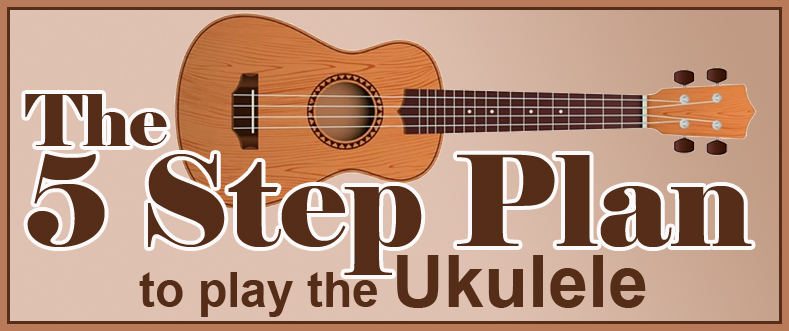
Lesson 1
Getting Started with the Ukulele
Here are the 5 things we will concentrate on this lesson...
1. The Names of the Strings
2. The C Major Chord
3. The G Major Chord
4. Playing "Mary Had a Little Lamb"
5. The C Major Scale
Now here are the details for each of these points...
1. The Names of the Strings
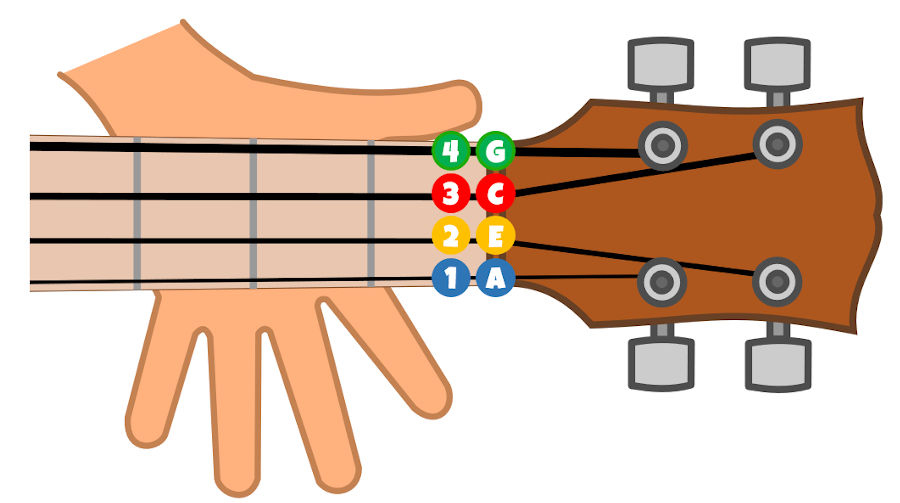
Each of the four strings has both a Number and a Name
String Number
Note that string 1 is at the bottom (the thinnest string). There is a tendency to call the top string #1, but most uke teachers and uke instruction books call the bottom string #1 because that is where much of your attention will be focused - on the bottom three strings.
String Name
The Name of the string is derived from the musical note each string is tuned to.
Those notes are (starting from the top) G - C - E - A
This means that when you strike the open G string you are playing the note "G".
The easiest way to remember these notes is to create an "acronym" using the note names - for example -
Grace Can't Eat Apples
Your First Chords
2. The C Major Chord
This is the chord that is used most by new ukulele players and is the easiest to play. So it's the best one to start on.
Here is how you play it. Put your third finger on the third fret of the 1st string (A3) and strum through all four strings.
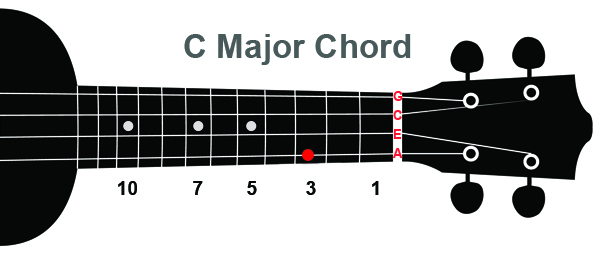
3. The G Major Chord
The G Chord is another very important chord for beginning ukulele players.
For the G Major Chord our fingers form a little triangle shape. Your 1st finger holds down C2, your 2nd finger holds down A2, and your 3rd finger holds down E3.
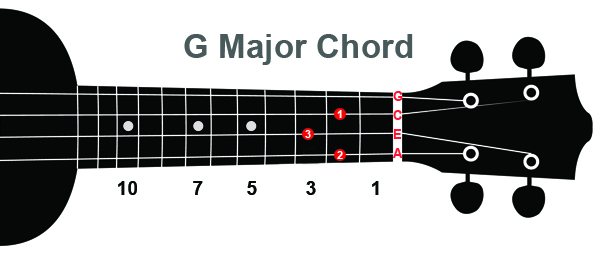
4. "Mary Had a Little Lamb"
We want to look at this song in two different ways...
Playing the Melody
First we want to learn how to play the melody. For that we will need to learn how to read what is called "tab" (short for "tablature"). This is a way of writing music where you show each note of a song by indicating the fret and string for that note. Here is the tab for "Mary Had a Little Lamb" in the key of C.
Just be aware that the top line in tab is string 1. So tab actually flips the strings around. This can be confusing, but you'll catch on quickly with a bit of practice.
Playing the Chords
The other thing we want to do is learn to strum the chords while the song is playing, or while we are singing the song. Notice that the chords are indicated above the tab lines. This requires that you transition back and forth between the C and G chords. These are the only two chords required for strumming along with this song.
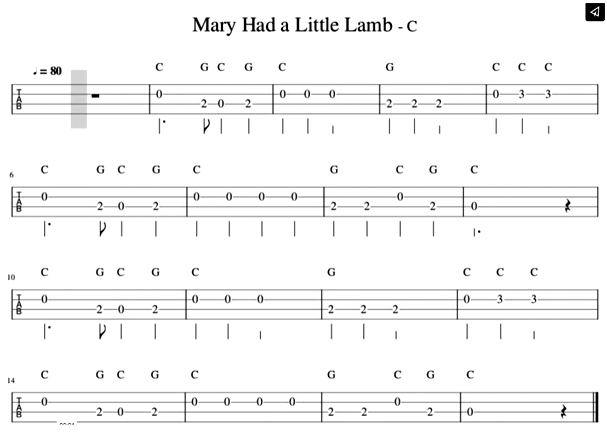
Go to PlayAlong version of "Mary Had a Little Lamb"
5. The C Major Scale
First let's look at musical "Keys". A "key" in music is used to define the range of notes used in a song. For example, a singer may find a song played in the key of G too high for his or her voice. So they might say "Let's try it in the key of D." That would lower the range of notes required to sing the song.
"Keys" are based on specific scales. The scale defines the notes to be used in the song. For example, the key of C is based on the C Major Scale.The C Major Scale is a series of notes that starts on a C note and moves up in pitch note by note until it comes to C again, an "octave" higher.
This is what many people are familiar with as "Do-Re-Mi". There are 8 notes in an octave - Do-Re-Mi-Fa-So-La-Ti-Do. In the case of the C Major Scale those notes are C - D - E - F - G - A - B - C.
Here is the tab for the C Major Scale played on the ukulele. Learning and practicing scales is useful for playing an instrument like a ukulele because it familiarizes you with how notes are related to each other, and teaches you how to move around on the fretboard.
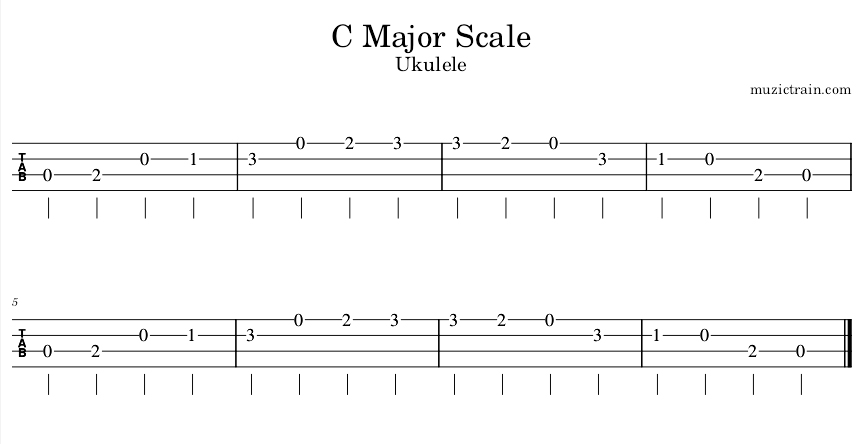
Use these 5 things to give you an excellent start in your ukulele journey. We will review these things before the next lesson and see how you made out. Then we will look at 5 more things to move you along.
Back to Start